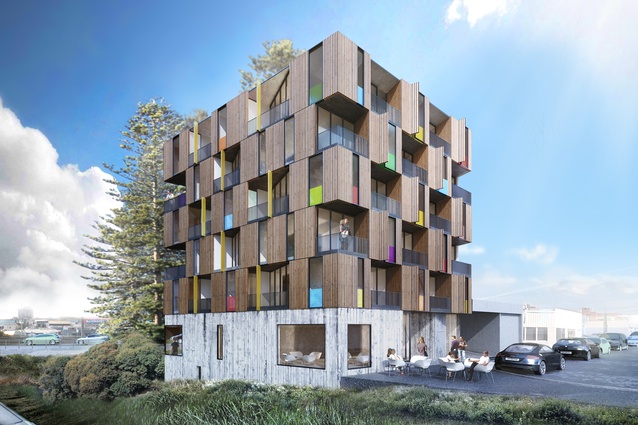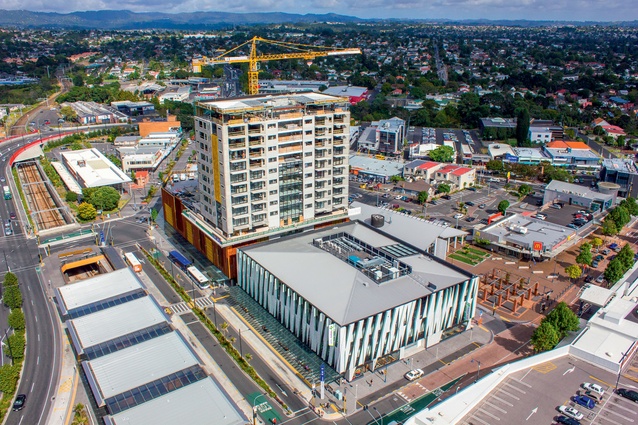The New Auckland: The way forward
In this series, The New Auckland, Progressive Building looks at some of the developments currently underway to house Auckland’s growing population. In this part, we look at ways to ensure housing densification in Auckland is well designed.
The age-old, ’not in my backyard’ attitude is difficult to sway, particularly when the words ’medium- and high- density housing’ come up.
In Auckland, this is an issue innately linked, perhaps, to the classic Kiwi quarter-acre dream. The three-bedroomed house on a section in a quiet, leafy suburb: it’s a dream that for many is hard to alter.
But with house prices in the super city ranked more unaffordable than those in London or Los Angeles in the latest Demographia affordability survey, and the average house costing more than eight times the average household income, change is nigh.
The Demographia survey ranked Auckland as the seventh ‘least affordable’ city of the 85 centres surveyed with populations of more than one million.
While this isn’t new – Auckland has been classified as unaffordable for a number of years now – in combination with the lack of available land and a fast-growing population, the tides are being forced to turn on traditional housing models, albeit slowly.
However, the fear of the ugly tenement blocks built hard up against boundary fences in the 1960s and 1970s still summons concern: will these be built next door, down the street, in my suburb?
These are fears that need to be addressed if Auckland is to move forward and embrace high quality medium- and high- density, affordable residential models, New Zealand Institute of Architects (NZIA) president Pip Cheshire said.
A recent competition run by the NZIA and developer Ockham Residential in conjunction with Auckland Council, asked architects to negotiate the terrain of medium-density housing and the varied needs of a diverse range of tenant configurations for a private development at 11 Akepiro St, Kingsland.
“The driver was for architects to demonstrate that buildings need not be mean, nasty neighbours, but also that they might offer a really good standard of living,” Cheshire said.
Akepiro jury chair, Peddle Thorp Architects director Richard Goldie, said of the winning design from S3 Architects: “It uses green materials and energy-saving technology, provides very livable apartments, engages well with a small neighbouring reserve, contributes positively to a mixed-use street and offers the city an inspiring work of architecture.”
So, while good design can create high-quality residential solutions, the question remains: how do we achieve this?
There are multiple issues at play. The foremost is the changing household demographic.
A recent report published by think tank The New Zealand Initiative highlights the fact that the country could face a housing shortage of 113,800 homes by 2031. It claims demographic changes caused by an ageing population, combined with overall population growth and current construction levels, are the drivers of this shortfall – New Zealand’s households currently incorporate 2.65 persons on average.
The New Zealand Initiative believes more houses will become empty nests in the next few years, occupied by older people, while adjacent homes will have high numbers of people crowded into them.
Hobsonville Point, a medium-density 167-hectare development in West Auckland, had its highest demand for one and three-person household configurations, followed by two-person homes, Hobsonville Land Company chief executive Chris Aiken said. “The world has changed dramatically from a quarter- acre pavlova paradise. Subdivisions need to reflect the new Auckland society.”
Medium- and high-density models are one way to mitigate the lack of available housing by providing residences targeted at smaller family groups. Building at a larger scale also offers economies in price in the construction phase, Kalmar Construction director Peter Kay said. “One solution to the affordability crisis is to develop more medium-density housing in older, established suburbs. Going back three or four years, people weren’t able to sell their homes and they were stuck. Now, they can now buy an apartment in their suburb and retire where they have always lived,” he said.
While the design of the building or structure itself is important, so too is the need to ensure an appropriate mix of housing verses recreational areas, Dominion Constructors residential manager Kevin Boroevich said. “We must ensure that we don’t create ghetto-type subdivisions. We must allow room for enough recreational areas within subdivisions so the families can utilise these areas as family and meeting areas.”
Looking ahead, the proposed Auckland Unitary Plan (PAUP) highlights areas where medium and high-density developments will be allowed – many parts of the document now have legal effect following its notification earlier this year. One of the plan’s many areas of influence, will be changed zoning requirements, especially around transport hubs, which will allow for higher density developments in areas that were formerly zoned differently. While these changes will allow for urban densification in certain central and city-fringe areas, there is still a significant focus on the development of greenfield sites further from the central city.
Research company RCG’s 2014 publication Constructive Thinking examines the influence fuel spending is having on Auckland household budgets, the economy and city development. RCG associate director of research John Polkinghorne says when new homes are built on the city’s fringe instead of more centrally, residents could easily spend more than $2,000 extra per year on petrol, on top of the average spend of $4,500 per annum. “That’s a drain on their economic resources, and it’s an issue for the environment. As a result, mixed-use developments and inner-city living will become more popular.”
But the Unitary Plan won’t do enough to enable intensification, Polkinghorne says. “There are too many restrictions, and a complex approval process. However, fringe living could be improved by ensuring the outlying areas have access to the services they need like shops and employment.”
In combination with the new zoning allocations of the Unitary Plan, the government and Auckland Council have so far identified scores of sites across the city where fast-tracked development of affordable housing can take place. These are known as Special Housing Areas (SHAs). Eighty SHAs have already been approved within the rural urban boundary, giving developers the means to get stuck into doing what they do best, developing.
However, the sheer scale of the volume of houses needed in Auckland to address the current and future shortage – an estimated 400,000 in the next 30 years – suggests that this is an issue that needs to be addressed by both private developers, and the public purse.
Auckland Council’s Housing Office project director Ree Anderson said the PAUP had design guidelines and principles associated with it in order to create better medium-density outcomes for the city.
“These principles include the effective integration of transport networks, storm water ponds and public parks.”
She said Auckland Council Property routinely reviewed their portfolio to identify land that might be suitable for housing, and partnered with private enterprises to develop these areas.
Hobsonville Point development was an exemplar project set up by Auckland Council and the Crown with private enterprise to demonstrate how medium-density living on greenfields land on the outskirts of Auckland could be achieved, Anderson said.
Chris Aiken believes the high level of amenity at Hobsonville Point, including an attractive streetscape, access to good schools, parks, public transport, and proximity to major transport corridors made it an attractive proposition for buyers and a template for future medium-density developments.
“I think if partnerships are genuine, well-structured and properly funded, and if each party delivers on its strengths, then you can take a supply-chain management approach to the delivery of housing - and not just housing volume, but housing affordability,” he said.
But regardless of whether projects are delivered by private developers or under a collaborative model, one thing is clear: more well-designed medium- and high-density housing is the only option for the Auckland of the (near) future.
For more on The New Auckland, click here.











